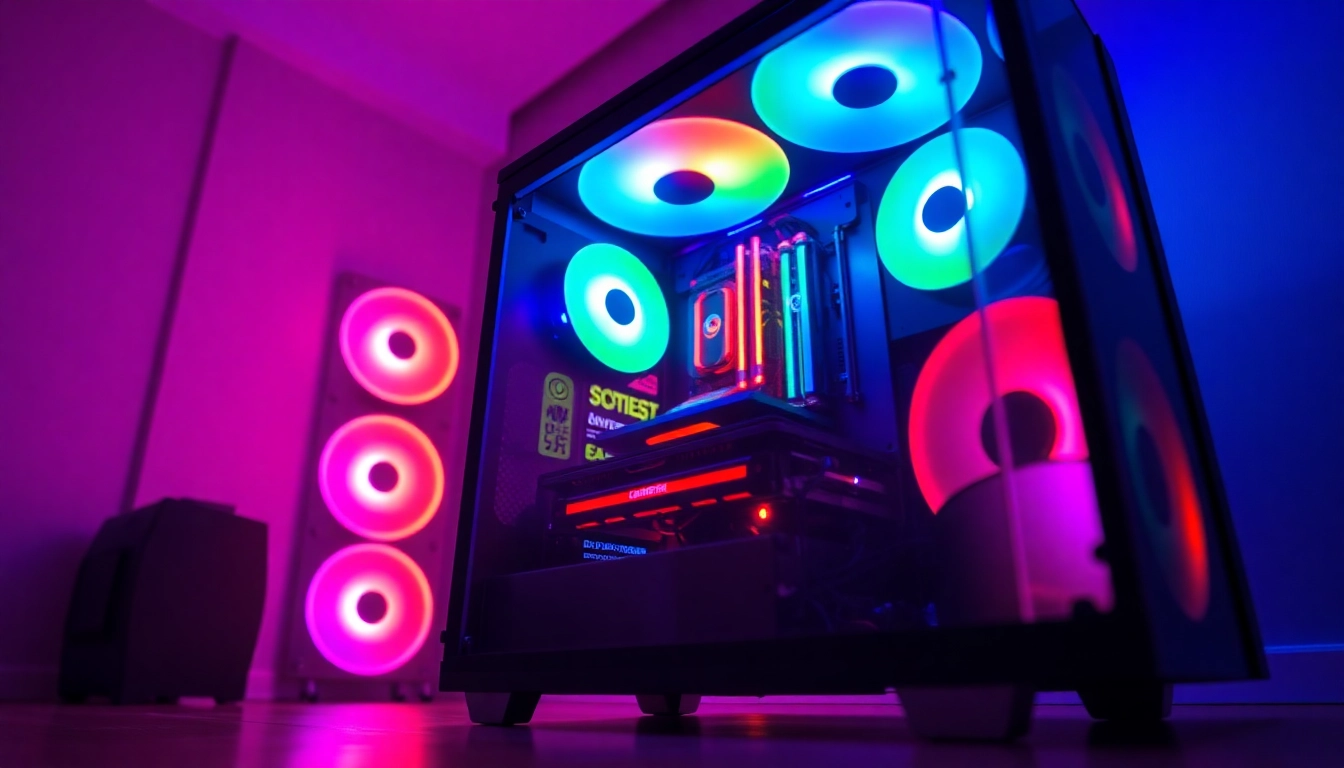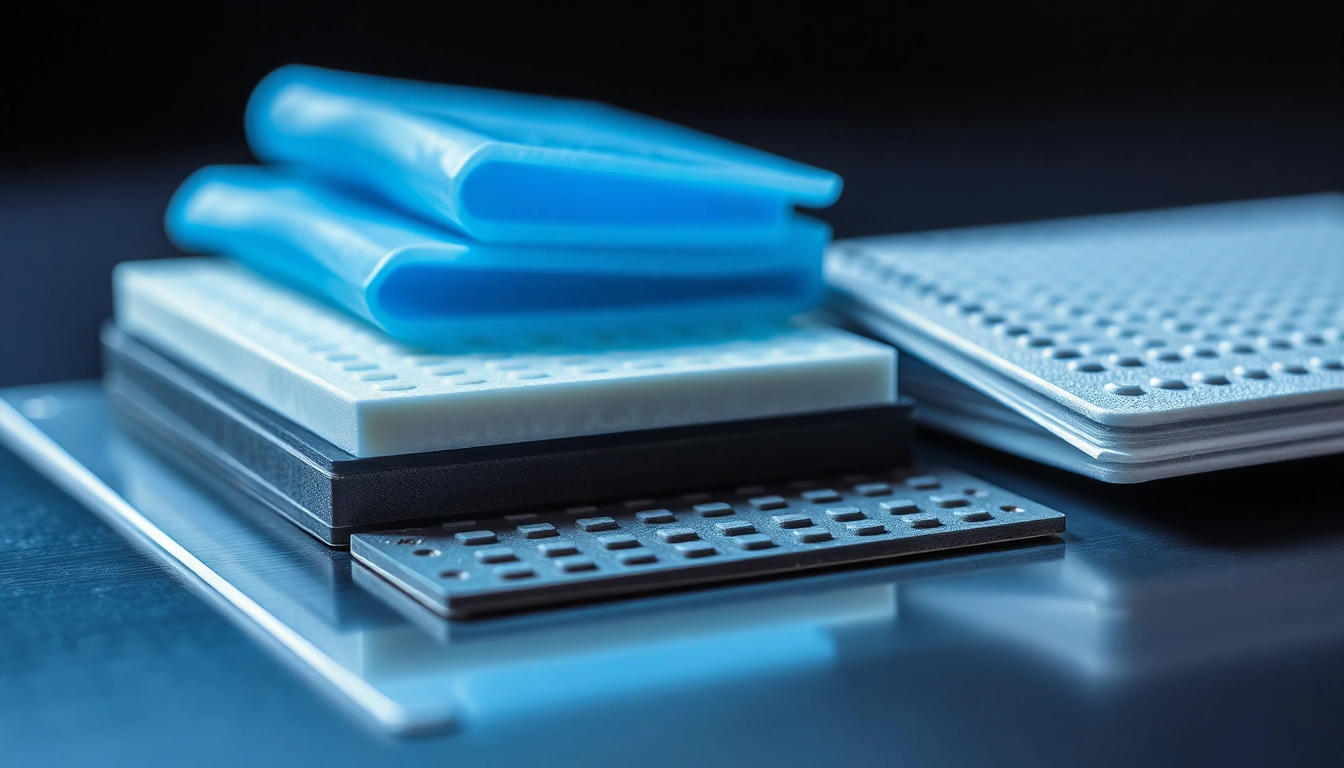Understanding Custom Gaming PC Cases
What is a Custom Gaming PC Case?
A custom gaming pc case allows gamers and PC enthusiasts to design a housing for their computer that reflects their personal style and meets their specific performance requirements. Unlike standard pre-manufactured cases, custom cases can be tailored in terms of size, shape, material, and other features to accommodate various components and aesthetic preferences. This is particularly important for gamers who are looking to maximize airflow, enhance thermal management, and visually showcase their builds through unique designs.
Benefits of a Personal Touch in PC Cases
Creating a custom gaming PC case comes with a range of advantages:
- Personalization: Custom PC cases can showcase your personality, interests, and creative flair. Whether you’re a fan of art, technology, or gaming franchises, there’s a design option that can reflect that.
- Improved Cooling: Custom cases often allow for better airflow and cooling options, which can lead to improved performance and longevity of components.
- Enhanced Visibility: Many custom cases feature transparent panels, LED lighting, and unique structures that allow for better visibility of internal components, providing more opportunities for visual flair.
- Functionality: Custom designs can be made with specific needs in mind, such as accommodating water cooling systems, specialized cable management, and more.
Materials and Design Choices for Your Case
The materials used in custom gaming PC cases are as varied as the designs themselves. Here are some common choices:
- Metal: Aluminum and steel are strong, durable options that provide excellent stability and can be easily painted or coated for aesthetics.
- Plastic: Often used in budget builds, plastic can be molded into complex shapes and often features interesting designs at a lower cost.
- Acrylic: Transparent acrylic allows for a dramatic display of internal components and lighting, making it a popular choice for custom builds.
- Glass: Tempered glass is becoming a standard choice for many high-end cases, providing a sleek look while allowing for lighting effects to shine through.
Top Features to Look for in a Custom Gaming PC Case
Cooling Options and Airflow Management
Effective cooling is one of the most critical features in any gaming PC case. Look for cases with:
- Multiple Fan Mounts: Ensure ample space for case fans, typically located in the front, back, and sometimes top of the case.
- Support for Radiators: For those interested in liquid cooling, cases that support radiators of various sizes are essential.
- Ventilation Grills: These features ensure that air can flow freely into and out of the case, maintaining optimal thermal performance.
Compatibility with Hardware Components
Another key feature to consider is compatibility:
- Motherboard Size: Check that the case accommodates your preferred motherboard form factor (ATX, micro-ATX, mini-ITX).
- GPU Clearance: Ensure there’s enough space for your graphics card, which can be quite large in high-performance gaming builds.
- Drive Bays: Consider how many storage drives you will need and make sure the case has enough bays for SSDs and HDDs.
Design Customization and Aesthetics
Design is highly subjective, but there are several aspects to consider when customizing your gaming PC case:
- Color Schemes: Nearly endless possibilities, from monochromatic to vibrant combinations, help to match or contrast with existing hardware.
- Lighting Features: RGB lighting has become increasingly popular, allowing users to create dynamic light shows within their cases.
- Port Configuration: Pay attention to where the USB, audio, and reset buttons are positioned, as well as how accessible they are.
How to Select the Right Custom Gaming PC Case
Identifying Your Needs and Preferences
Before diving into the world of custom cases, it’s vital to assess your gaming and aesthetic needs. Ask yourself questions such as:
- What components will I use, and what are their dimensions?
- Do I prioritize aesthetics, functionality, or both?
- What cooling solutions do I plan to implement?
Budgeting for Your Custom Build
Custom gaming cases are available at various price points. While it’s tempting to go for the cheapest option, remember that quality materials and features may save you money in the long run due to improved durability and efficiency. Establishing a budget that feels comfortable can also help steer your decision-making process.
Reading Reviews and Comparisons
Once you have a shortlist of potential cases, it’s time to dig deeper. Look for user reviews and expert opinions that cover the following:
- Build quality and design flaws
- Overall airflow and temperature management
- Ease of assembly and cable management
Popular Styles and Trends in Custom Gaming PC Cases
RGB Lighting and Transparent Designs
RGB lighting has become a hallmark of modern gaming setups. Transparent designs allow for creative lighting arrangements, showcasing unique internal components. Many manufacturers offer pre-configured LED systems or setups that sync with software for customizable effects.
Minimalist vs. Maximalist Approaches
Choosing between minimalist or maximalist design styles can define the overall aesthetic of your gaming setup. Minimalism promotes clean lines and simplicity, while maximalism embraces bold colors and intricate designs—each appealing to different types of gamers and enthusiasts.
The Rise of Eco-Friendly Cases
As environmental consciousness grows, so does the availability of eco-friendly gaming cases. These cases often utilize recycled materials or are designed for easy recycling, appealing to gamers who prioritize sustainability without compromising aesthetics or performance.
Your Guide to Building with a Custom Gaming PC Case
Essential Tools and Components for Assembly
Building a PC from a custom case requires the right tools. Here’s a list of essentials:
- Phillips screwdriver
- Anti-static wrist strap
- Toolbox or organizer for screws
- Wire cutters and management tools
Step-by-Step Assembly Instructions
1. Begin by laying out your components and tools on a clean, anti-static surface.
2. Install the PSU (Power Supply Unit) in your case, securing it with screws.
3. Install the motherboard, ensuring that you’re using the appropriate standoffs and mounting hardware.
4. Carefully insert the CPU, applying thermal paste and installing the CPU cooler.
5. Attach the RAM sticks to their designated slots on the motherboard.
6. Install storage drives—be mindful of HDD vs. SSD placements.
7. Mount the GPU, paying attention to PCIe slot orientation and securing it properly.
8. Connect all necessary cables, ensuring proper cable management for airflow.
9. Close your case, plug in peripherals, and perform initial boot tests.
Maintenance Tips for Longevity and Performance
Maintaining your custom gaming PC case is crucial to ensuring optimal performance over the years:
- Regularly clean dust filters and panels to maximize airflow and cooling efficiency.
- Check and manage cables periodically to avoid obstructing air pathways.
- Evaluate thermal paste and fans; replace them as necessary to maintain cooling performance.
- Be aware of component upgrades and ensure compatibility with your current setup.



